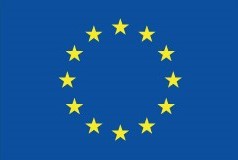- Home
- EU PiG – Entire male production
EU PiG – Entire male production
Spanish farmer Ramon Armengol has a 720-sow, farrow-to-finish ‘closed unit’ producing entire males. Aware of the risks of boar taint and possible welfare issues associated with this, he has introduced several different systems to address them. The results include lower production costs per kilo.
Ambassador: Ramon Armengol, Mas Sant Sebastià, Spain
Publication date: May 2018
Theme: Animal welfare
Challenges: Castration methods
Europe has been facing a voluntary abandonment of piglet castration without anaesthesia and analgesia since 2018, and the work in Spain shows that entire male production is a possibility for all countries. Obviously, the risks of boar taint and welfare issues must be taken into consideration, especially for systems producing heavy pigs, in which alternatives must be properly developed.
It is estimated that around 80% of male piglets in Spain are produced without castration. This enables farmers to take advantage of the better efficiency of producing entire males and to produce meat with lower fat content. At the same time, they avoid the practice of castration and preserve high welfare standards. From an economic point of view, they save the associated costs of surgical castration, including labour, materials, anaesthesia and/or analgesia.
Production without castration
The costs and benefits of the production system Ramon has used have been analysed, considering the changes in technical performance parameters. Based on real-farm data and calculations based on the Interpig model, the following changes have been observed:
- 3.86% lower labour input per pig, with castration no longer carried out
- Finishing feed conversion ratio was 5.34% better in entire males than in castrates (castrates have a 9% higher feed intake)
- Daily liveweight gain was 3.6% lower in entire males than in castrates
- Average lean meat percentage is 4–5% higher in entire males than in castrates
- The farmer did not report any higher mortality or vet costs due to avoiding castration
Based on these assumptions, the variable production costs were lower by 3.2% and the total costs by 2.7% for entire male production (€ 1.36/kg vs € 1.40/kg hot slaughter weight). However, these gains may be neutralised by a 3.36% lower price obtained for non-castrates (1.092 € vs 1,13 €/kg).
Managing risks
Ramon has recognised that producing entire males requires proper hygiene on the farm and proper management and supervision skills to foresee and solve any behavioural problems. Risks with non-castration include boar-tainted carcases and increased aggression and sexual behaviours.
To address these risks, Ramon introduced several systems and programmes, including different feeding programmes. Surveillance of behaviour takes place regularly to detect potential problems of increased aggression. The pigs are slaughtered at a weight of around 105 kg as opposed to 120 kg (castrated pigs).
Case studies
Technical reports
Animal welfare best practice challenges
Strategies for dealing with piglets from hyperprolific sows
Strategies to reduce aggression between animals
The quality of the farm atmosphere
Contact us
To access more information, contact RPIG (Spain): Emma Fàbrega or EUPig@ahdb.org.uk
This project has received funding from the European Union`s Horizon 2020 research and innovation programme under grant agreement No 727933.
 Government logo
Government logo

